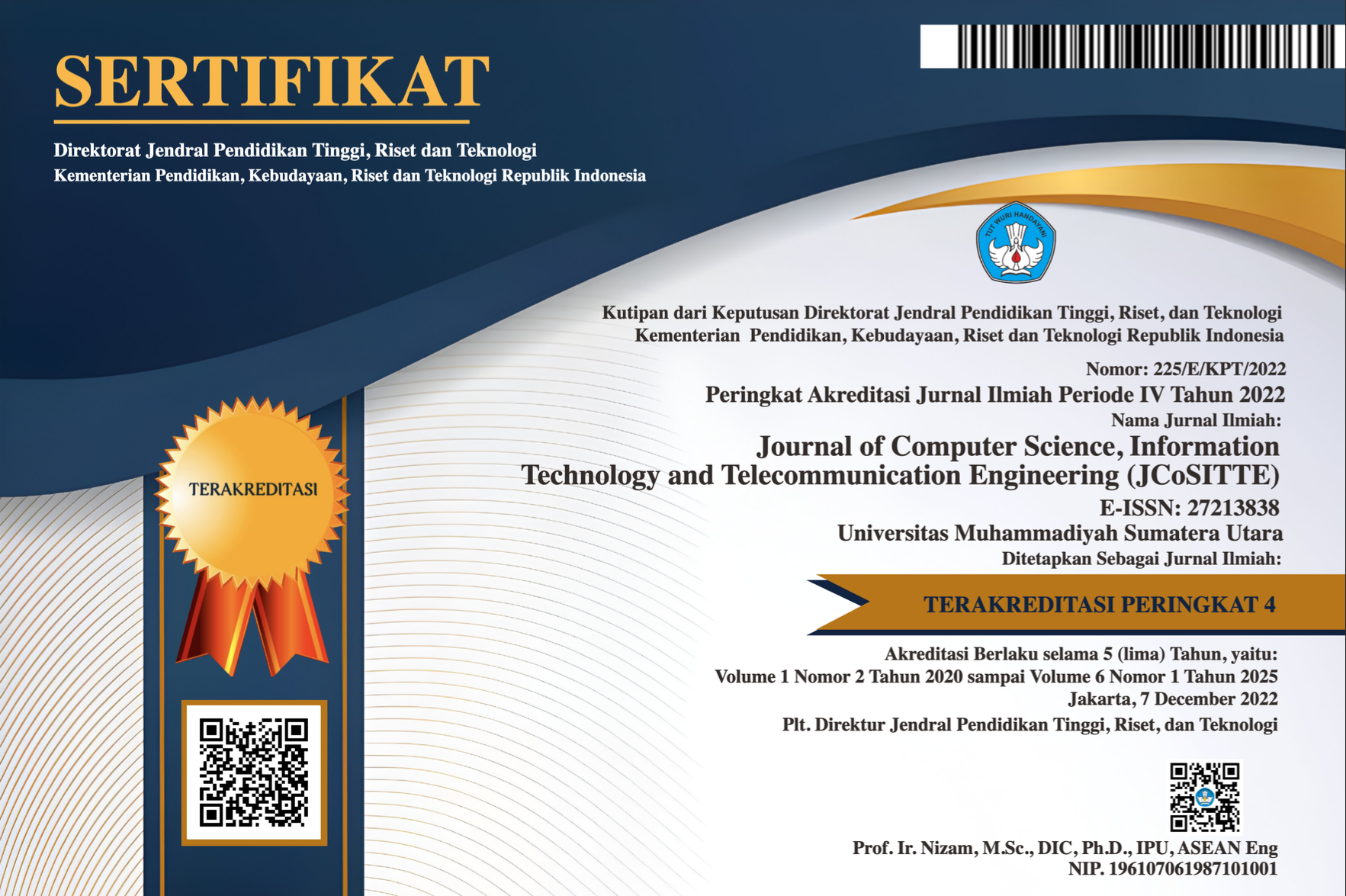An Enterprise Resource Planning System Solution for Small-Mid Size Enterprises: An Information System Development Case Study
Abstract
Keywords
Full Text:
PDFReferences
Andi Saputra, Ashari Imamuddin, & Pria Sukamto. (2020). Rancang Bangun Aplikasi Sistem Penjualan Case Study: Pt. X. INFOTECH : Jurnal Informatika & Teknologi, 1(2), 7886. https://doi.org/10.37373/infotech.v1i2.67
Date, C. J. (2004). An Introduction to Database Systems (8th Editio). Pearson Education, Inc.
Dweib, M., Abuzir, Y., & Rabays, A. (2014). Standard for ERP as Cloud Computing. ARPN Journal of Science and Technology, 4(7), 427432.
Ellen F. Monk, & Wagner, B. J. (2013). Concepts in enterprise resorce planning. In Angewandte Chemie International Edition (Vol. 40, Issue 6). https://doi.org/10.1002/1521-3773(20010316)40:6<9823::AID-ANIE9823>3.3.CO;2-C
Gechman, M. (2019). Software Development Methodologies. Project Management of Large Software-Intensive Systems, August 2013, 4966. https://doi.org/10.1201/9780429027932-4
Haddara, M., & Elragal, A. (2013). ERP adoption cost factors identification and classification: A study in SMEs. International Journal of Information Systems and Project Management, 1(2), 521. https://doi.org/10.12821/ijispm010201
Hassan, M., Jabar, M. A., Sidi, F., Jusoh, Y. Y., & Hassan, S. (2016). Enterprise resource planning adoption lifecycle: A systematic literature review. Journal of Theoretical and Applied Information Technology, 85(3), 403410.
Imamuddin, A, Nahar, I., & Chandra, S. (2020). TransJoin: An Algorithm to Implement Division Operator of Relational Algebra in Structured Query Language. Journal of Physics: Conference Series. https://doi.org/10.1088/1742-6596/1477/3/032003
Imamuddin, Ashari. (2007). Pemetaan Hubungan Generalisasi / Spesialisasi Pada Model ER Ke Model Relasional. Data Base, 2007(Snati).
Kakar, A. K. (2012). A Theory of Software Development Methodologies. SAIS 2012 Proceedings, July, 137142.
Kneevi?, G., Pavlovi?, V., & Mila?i?, L. (2015). The challenges of implementation of ERP in accounting. Ekonomski Pogledi, 17(4), 107122. https://doi.org/10.5937/ekopog1502107k
Suzanne Robertson, & James Robertson. (2008). Mastering the Requirements Process: Getting Requirements Right (3rd ed., Issue February). Addison-Wesley. https://doi.org/10.1201/9781439834367.axc
Whitten, J. L., & Bentley, L. D. (2007). System Analysis & Design Methods - Whitten.pdf (Seventh). McGraw-Hill Irwin.
DOI: https://doi.org/10.30596/jcositte.v2i1.6534
Refbacks
- There are currently no refbacks.





.png)

